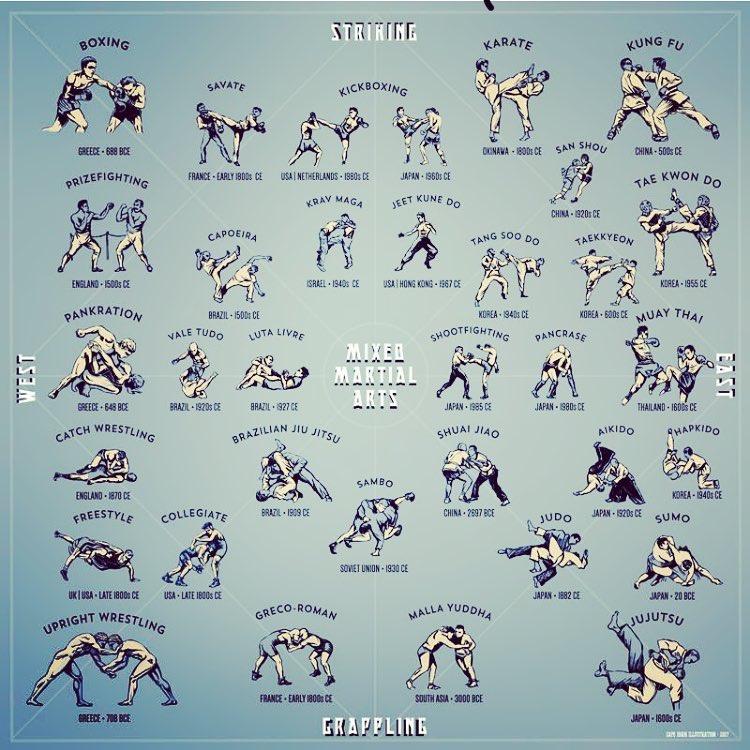Discover The Captivating Journey Of Martial Arts, From Its Ancient Origins To The Innovative Methods These Days. Reveal The Secrets Behind This Classic Self-Control
Discover The Captivating Journey Of Martial Arts, From Its Ancient Origins To The Innovative Methods These Days. Reveal The Secrets Behind This Classic Self-Control
Blog Article
Article Author-Dinesen Ross
Step into the world of martial arts, where old origins and modern methods collide in an electrifying trip of discipline and self-discovery.
As you explore the history and development of this fascinating art type, prepare to be mesmerized by the social influences, technological innovations, and extensive philosophy that have shaped it over centuries.
From the combat zones of ancient human beings to the training grounds these days, martial arts have stood the test of time, frequently adapting and expanding.
Each strike, each motion, lugs with it the weight of many years of tradition and wisdom, passed down via generations. This is a tale of strength, of warriors that looked for not only physical prowess, however likewise self-confidence and harmony.
Join us on this remarkable expedition as we reveal the keys, the tales, and the transformational power of martial arts.
Get ready to be motivated, challenged, and forever transformed by the background and advancement of martial arts.
Cultural Impacts on Martial Arts
As you discover the background and evolution of martial arts, you'll quickly discover the interesting ways in which social influences have shaped these fight methods.
From the ancient human beings of China and India to the a lot more recent advancements in Japan and Brazil, martial arts have been greatly affected by the societies in which they came from.
For instance, Chinese martial arts, such as Kung Fu and Tai Chi, are deeply rooted in the approach of Taoism and the principle of Yin and Yang.
On the other hand, Japanese martial arts, like Martial arts and Judo, mirror the samurai warrior traditions and the worths of self-control and honor.
Likewise, Brazilian martial art, Capoeira, combines components of African dance and music, showing the cultural heritage of African servants in Brazil.
These cultural influences not just offer each martial art its special features yet also give a deeper understanding of the historical and social contexts in which they progressed.
Technical Innovations and Martial Arts
With the rise of sophisticated weaponry and cutting-edge training devices, you have actually had the ability to improve your skills and adapt to the ever-changing combat landscape.
https://martial-arts-kids-classes44443.blogoscience.com/35963481/kid-s-martial-arts-a-lively-method-to-create-physical-conditioning-and-sychronisation have actually revolutionized the means martial arts are practiced and educated. Virtual reality simulations currently allow you to train in realistic fight circumstances without the threat of physical harm. https://best-type-of-martial-arts99876.blogripley.com/30458460/explore-the-critical-distinctions-between-fighting-styles-and-protection-bring-to-light-the-fundamental-elements-of-these-effective-self-controls-and-select-one-of-the-most-suitable-course-for-your-personal-defense -speed video cameras capture every move, allowing you to evaluate and best your methods. Wearable gadgets check your heart rate, breathing, and muscular tissue activation, giving immediate feedback on your efficiency.
In addition, the growth of customized equipment, such as resistance bands and dexterity ladders, has enabled you to enhance your rate, stamina, and agility. These technological advancements have not only made training extra effective yet have likewise pushed the borders of what is feasible in martial arts, enabling you to get to new elevations in your method.
The Approach and Concepts of Martial Arts
The approach and principles of martial arts are deeply rooted in shaping your frame of mind and instilling self-control, emphasis, and regard in your practice.
1. Mindset: Martial Arts shows you to establish a strong and resilient frame of mind. It enables you to overcome challenges both on and off the mat, pressing your limitations and persevering when faced with adversity.
2. Self-control: Martial Arts demands technique and self-discipline. Via normal training and adherence to stringent policies and techniques, you learn to control your impulses and create a solid job ethic.
3. Focus: Martial Arts calls for extreme focus and focus. By educating your mind to be existing in the minute, you enhance your capacity to react quickly and successfully throughout combat scenarios.
4. Respect: Martial Arts stresses regard for oneself, instructors, training companions, and challengers. It instructs you to value the abilities and experiences of others, cultivating a feeling of camaraderie and sportsmanship.
Conclusion
Congratulations on finishing your trip through the fascinating world of martial arts! Throughout this exploration, you have experienced the abundant background and exceptional advancement of these combat practices.
From their ancient origins to the contemporary methods we see today, martial arts have actually been shaped by cultural influences.
The integration of innovation has actually also played a substantial duty in transforming the method martial arts are instructed and practiced in today day.
However, Related Site is very important to remember that martial arts are greater than just physical combat. https://waylonhsdmx.onzeblog.com/29872587/discover-the-martial-art-style-that-is-most-proper-for-you-access-the-necessary-guide-that-will-establish-you-on-the-path-to-attaining-mastery-in-martial-arts incorporate extensive ideologies and directing principles that go beyond the mere act of combating.
Take a moment to review this anachronistic adventure and value just how the legacy of martial arts remains to thrive in the present, going beyond time and boundaries.
